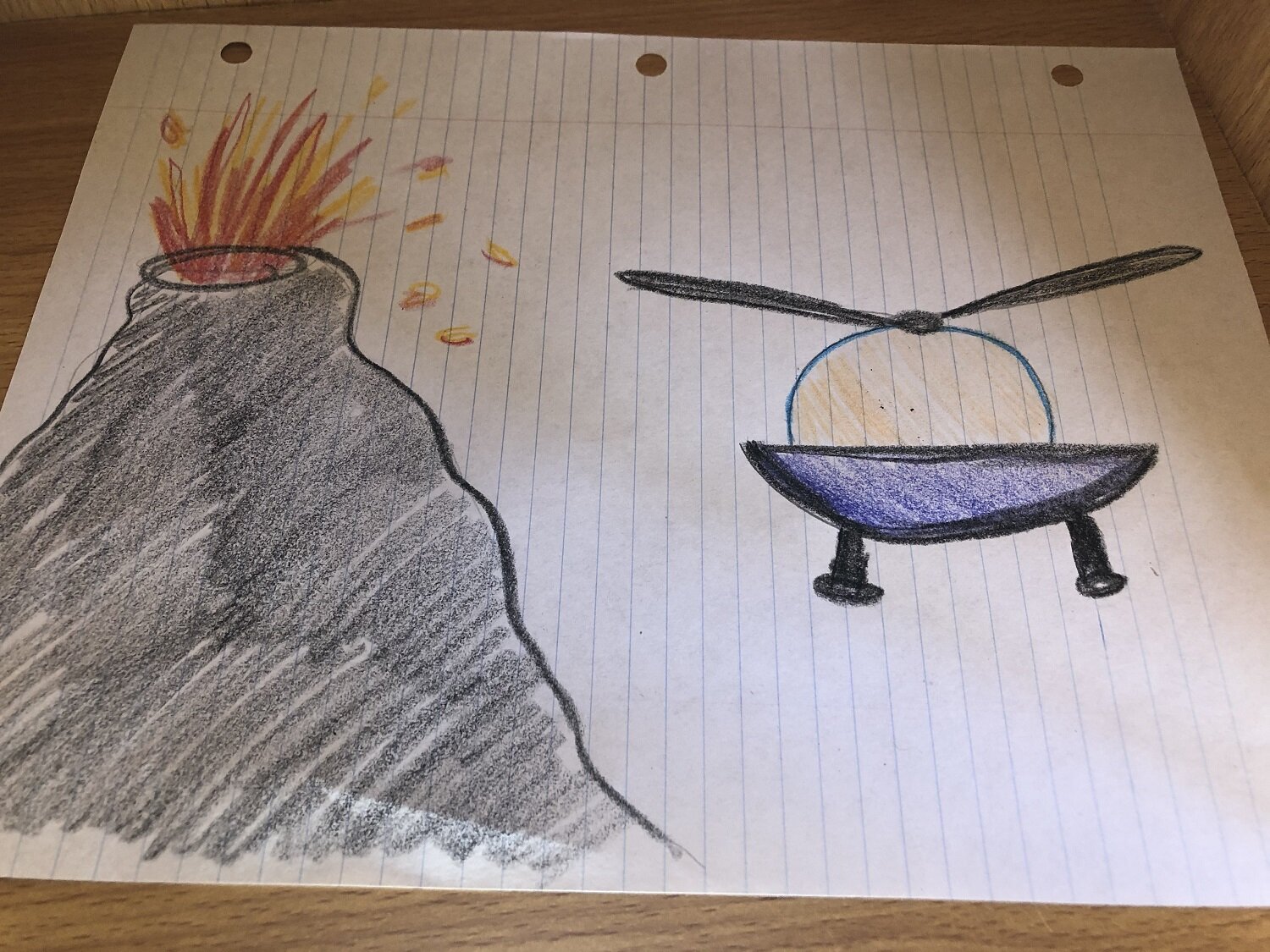Lava Challenge
Challenge your imagination to find your way around lava. Lava is hot, liquefied rock that flows from a volcano or other opening in the surface of Earth.
Start with the following scenario or feel free to create your own story: A volcano has just erupted leaving you stranded at one side of the volcano. Lava is very hot, and you can’t touch it. You need to get across the lava to reach important survival gear. How can you get across the lava without touching it? Use lava proof platforms, of course!
What you need
Lava safe platform(s) - foam mats, yoga mats, cushions, and/or pillows
Survival materials - 4 flags, ribbons, scarves, or yarn scraps
Space that is safe to move around in. If possible, try playing outside.
What you do
Setting up the game:
Place the colored flags (ribbons or scarves etc.) you must collect at one side of the room or yard; these will be the survival materials you need to collect. At the opposite side of the space, set a home base where you will start.
Spread the mats or cushions between home base and where you placed the survival materials. These are your lava safe platforms.
Playing the game:
Your goal is to collect all the flags and make it back to home base without touching the lava (or floor). Once the game has begun, you can ONLY stand safely on the lava safe platforms – you will have to jump from one to the next and not touch the floor, which is extremely hot lava. You can only bring one flag at a time back to the home base so you must work as a team to successfully retrieve all the survival materials.
If you land in the lava, you must start back at home base. And if you have a flag, you need to put it back.
Keep it challenging! Change the platforms and move them around, remove some to make it even more interesting.
Now that you have been saved from the volcano eruption, you want to be sure this doesn’t happen again. Your next challenge is to build a model of a vehicle, bridge, or other device that can safely transport people over lava.
What you need
Recycled materials such as cardboard, paper tubes, plastic containers, milk cartons
Scissors
Tape
Paper
Pen
What you do
1 - Brainstorm some ideas on what to create that would solve the problem of getting to safety if a volcano erupted.
Is it a vehicle, a bridge, or a flying machine?
What are some things you need to consider? Temperature of lava, materials that can withstand high temperatures, and other obstacles that might happen.
2 - Draw some designs or sketch your ideas.
How will it move, function, and what might it be attached to?
Does it need a foundation?
What material will you built it with
3 - Collect the supplies you will use to build a model of your design.
4 - Build your model.
5 - Explain and demonstrate your model. Think about what materials you could use if you were building your design. Would be strong enough to withstand the heat and pressure of an exploding volcano. Do you think your model would work? If not, what changes can you make to improve the design?
Explanation:
Lava is very hot! It can be 700 to 1200 degrees Celsius. Volcanologists, scientists that study volcanoes, use specially designed equipment and tools to study an active volcano.
Materials that volcanologist wear must be flame resistant, be durable, and light weight so they can easily move. It also must have a lot of pockets to hold notebooks, markers, GPS, rock samples and to hold clips for caring tools like rock hammers and their helmet.
There are a few different types of volcanologists. Physical Volcanologists study the ways volcanoes erupt. Geophysicist Volcanologists study volcanic earthquakes, gravity and magnets. Geodesic Volcanologists study the changes in the shape of the earth and how volcanoes are formed. Geochemist Volcanologists look at the makeup of different types of volcanoes and what they might send out when they erupt such as ash, gasses or molten rock.
Volcanologists know when it is safe to explore a volcano and when it is not. They use a lot of safety precautions to do their job.
Building structures where there might be a volcanic eruption will need to consider a few things such as
o Building on stilts made of titanium or tungsten, to be able to withstand the pressure and the heat of lava flow.
o Have reinforced roofs that can hold ash and other debris.
o Some volcanoes spew out dangerous gasses, therefore buildings would need to be airtight with a special system to filter outside air.
Loving this content? Make a donation to the Saskatchewan Science Centre!
#volcanoes #scienceathome #sasksciencecentre #realsciencerealfun #AtHomeWithCASC #ScienceChampions #ScienceAtHome #sscvolcanoweek



